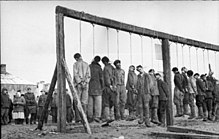In Europe, before the outbreak of the war, the Allies had significant advantages in both population and economics. In 1938, the Western Allies (United Kingdom, France, Poland and British Dominions) had a 30 percent larger population and a 30 percent higher gross domestic product than the European Axis (Germany and Italy); if colonies are included, it then gives the Allies more than a 5:1 advantage in population and nearly 2:1 advantage in GDP. In Asia at the same time, China had roughly six times the population of Japan, but only an 89 percent higher GDP; this is reduced to three times the population and only a 38 percent higher GDP if Japanese colonies are included.
Though the Allies' economic and population advantages were largely mitigated during the initial rapid blitzkrieg attacks of Germany and Japan, they became the decisive factor by 1942, after the United States and Soviet Union joined the Allies, as the war largely settled into one of attrition.While the Allies' ability to out-produce the Axis is often attributed to the Allies having more access to natural resources, other factors, such as Germany and Japan's reluctance to employ women in the labour force, Allied strategic bombing, and Germany's late shift to a war economy contributed significantly. Additionally, neither Germany nor Japan planned to fight a protracted war, and were not equipped to do so. To improve their production, Germany and Japan used millions of slave labourers; Germany used about 12 million people, mostly from Eastern Europe, while Japan pressed more than 18 million people in Far East Asia.
Occupation
In Europe, occupation came under two very different forms. In Western, Northern and Central Europe (France, Norway, Denmark, the Low Countries, and the annexed portions of Czechoslovakia) Germany established economic policies through which it collected roughly 69.5 billion reichmarks (27.8 billion US Dollars) by the end of the war; this figure does not include the sizable plunder of industrial products, military equipment, raw materials and other goods. Thus, the income from occupied nations was over 40 percent of the income Germany collected from taxation, a figure which increased to nearly 40 percent of total German income as the war went on.
In the East, the much hoped for bounties of Lebensraum were never attained as fluctuating front-lines and Soviet scorched earth policies denied resources to the German invaders. Unlike in the West, the Nazi racial policy encouraged excessive brutality against what it considered to be the "inferior people" of Slavic descent; most German advances were thus followed by mass executions. Although resistance groups did form in most occupied territories, they did not significantly hamper German operations in either the East or the West until late 1943.
In Asia, Japan termed nations under its occupation as being part of the Greater East Asia Co-prosperity Sphere, essentially a Japanese hegemony which it claimed was for purposes of liberating colonised peoples. Although Japanese forces were originally welcomed as liberators from European domination in many territories, their excessive brutality turned local public opinions against them within weeks. During Japan's initial conquest it captured 4,000,000 barrels (640,000 m3) of oil (~5.5×105tonnes) left behind by retreating Allied forces, and by 1943 was able to get production in the Dutch East Indies up to 50 million barrels (~6.8×106 t), 76 percent of its 1940 output rate.


No comments:
Post a Comment